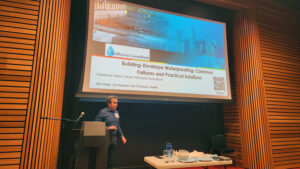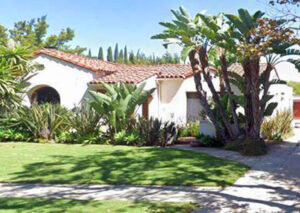Superior Roofing and Forensic Waterproofing
If you want to create superior roofing, you need to combat the most common and damaging problem-leaks. Leaks generally start around areas like skylights, dormers, valleys and chimneys. Often using flashing, installing drains and other strategies will not guarantee that the roofing that you have constructed will be leak proof.
However, forensic waterproofing methods can help you determine if your new roof or one you’re repairing are leak free. Forensic waterproofing can be your way of double checking your work. This cutting edge technology uses specialized techniques like infrared and nuclear moisture surveys, high voltage electronic leak detection and low voltage vector mapping to identify where a leak is present. Forensic waterproofing can help guarantee that the roof is leak free, which is one the best way to create superior roofing.
Infrared Moisture Surveys
Infrared moisture surveys utilize flir thermal imaging cameras that can detect where wet spots are present. These tests are done in the evening when the roof has cooled down and the temperature is equal to the outdoor air. These cameras can identify areas where moisture is present.
This method also can measure the difference between roof temperatures and the surrounding air, and they are one technique you can employ to help eliminate wet spots. Utilizing infrared moisture surveys is one means to help you create superior roofing.
Nuclear Moisture Survey
Nuclear moisture surveys use Troxler roof moisture gauges to detect moisture. When leaks are detected, they are marked. A grid is then set up, and the wet spots are compared to the dry spots. This allows you to see the parameters of the wet spots. Although this survey can be time-consuming, it is a necessary process if you are committed to having superior roofing.
High Voltage Electronic Leak Detection (ELD)
High voltage ELD is employed to measure moisture on membranes. They do this by using a long-handled brush. To be effective, the brush must make direct contact with the membrane. This provides you with another tool for identifying wet spots. However, this method is not effective on a “green” roof, where the presence of vegetation prevents direct contact between the membrane and the surveying instrument. High voltage ELD can be an efficacious tool to obtain superior roofing.
Low Voltage Vector Mapping
Low voltage vector mapping is very accurate, but it has many drawbacks. It works well in wide open areas. However, it’s more cumbersome to set up. It is typically not used on parapets, flashing and curbs and transitions, that are places, which could spring a leaks. Because low voltage vector mapping has 100% accuracy, it is an important weapon in your war against leaks, and for an outcome of superior roofing.





